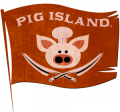Eric Pallant’s resume is full of degrees in environmental sciences, published academic works and teaching credentials from California to Israel and back to Pennsylvania, where he now lives and teaches at Allegheny College. So why did we want to talk to him? Because he wrote an excellent book called Sourdough Culture: A History of Bread Making from Ancient to Modern Bakers. He uses his interest in the history of his own starter to trace breadmaking and sourdough cultures throughout time and space in a very readable narrative on a very academic topic. After reading the book, we wanted to talk with Eric about how his professional work and academic studies intersect with his love of sourdough, his favorite bread baking resources and what comes next in his writing about bread.
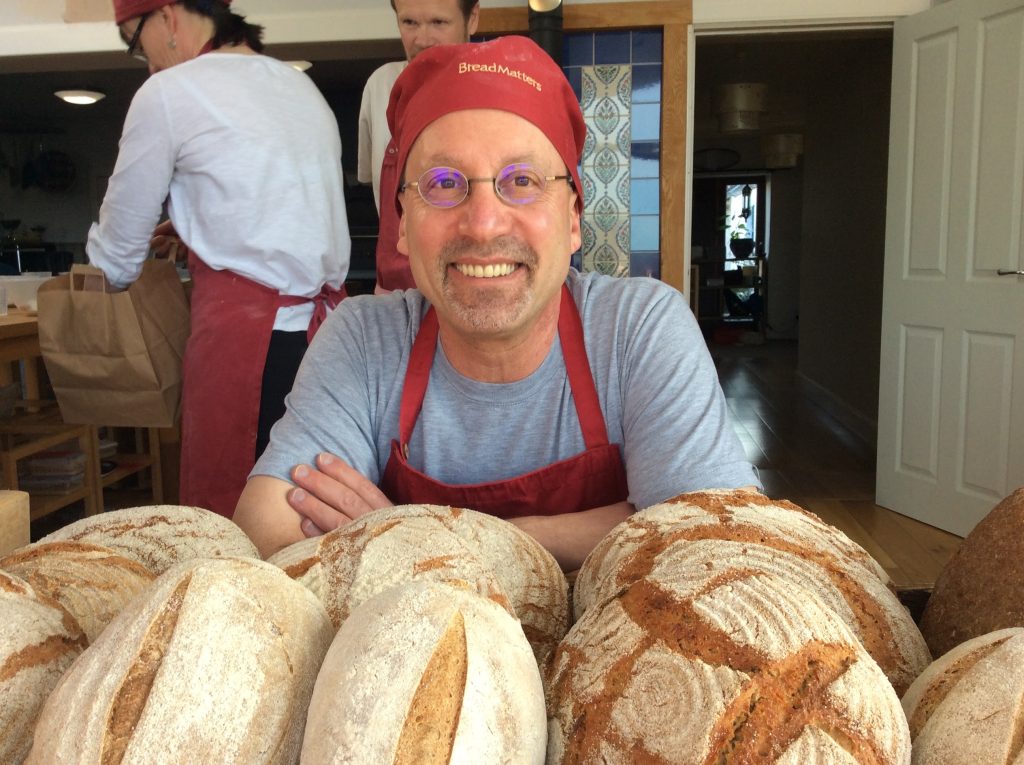
Food Karma: The book talks about how you got into making sourdough, but in your studies of the environment, were you focused on anything food related?
Eric Pallant: I actually teach a class called “Soil to Plate.” It covers where food comes from beginning with the soil, because as a soil scientist that’s the most important thing in the world, all the way through to the end of production, how you make food and all that. The connection that I make between sourdough bread and environmental science and sustainability is that I think of sourdough bread as a gateway drug to sustainability.
When you give somebody a fresh slice of warm sourdough bread they’re always amazed. Then you tell them that there are really only four ingredients in it: there’s just flour, and of course if you really care it’s good flour, that’s local flour, that’s heirloom flour, but it’s flour and water and a little bit of salt and the leavening agent, which in this case is sourdough starter. What happens is that people start to think about why this bread is so good and what that stuff in the supermarket in a shiny plastic bag is. Once they start to ask that question about what the difference between food made from food and stuff that in the store is, they are headed down the path asking why stuff they buy at the store doesn’t really taste great and what is that made of and how does food get to the store. Now we’re starting to think about food and production and agriculture and issues of justice and equity and who has access and things like that.
It’s a sneaky way for me to get people to join the revolution. If you’re gonna be an environmentalist, you spend most of your life walking into rooms and people feel guilty just by your presence. They apologize for using a disposable cup or driving a big car. I don’t care. Environmentalists spend way too much time making people feel miserable, and I think if you’re going to bring people along to a more sustainable way of life, it better be more enjoyable and tastier and full of love and life. That’s the backstory that’s not really in the book but is partly what the book is trying to achieve.
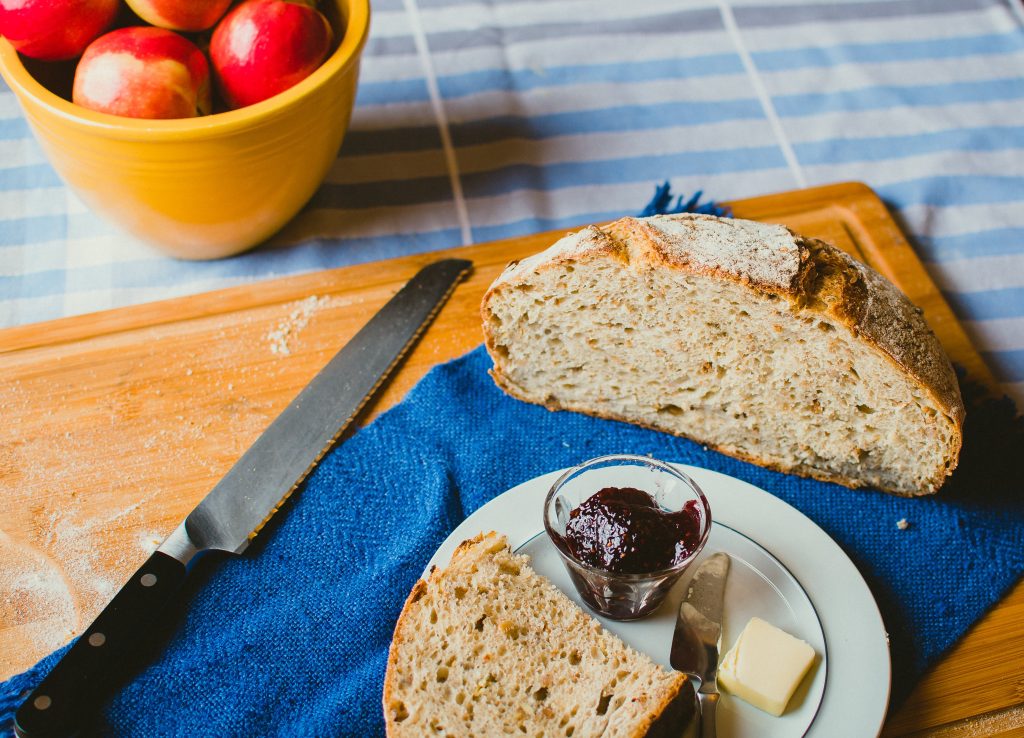
FK: Do people study soil primarily to figure out how to grow things better or for another reason?
EP: It’s a great question. I’m old enough to say that back in the day there were no advanced degrees in environmental science. As I thought about it, all of our food for a rapidly expanding population has to come from soil. All of our waste essentially goes into soil. All of our water moves through soil. When we die we become buried in soil. All the hazardous waste on the planet, for the most part, was disposed of there. So studying soil science was my way of getting at a much more holistic view of the planet. The overwhelming majority of people who study soil are interested in increasing food production.
FK: When you started telling people about your ideas for the book, what were their reactions like?
EP: Very sympathetic. They’d go, “that’s nice, you’re gonna write a book about sourdough, I’m sure somebody would be interested,” until I start describing some of the core of the story, which is that I have a starter that was given to me that’s more than 100 years old. You start asking people what they have in their lives that’s more than 100 years old and is alive and has been handed from person to person and is part of a way of preparing food that’s as old as civilization. If you say, “I write about rye,” how long before their eyes glaze over. Then you make it interesting.
My goal was to write a book that I would read. I’m a professor, an academic, which turned out to be, and with good reason, a real strike against me as I was trying to find a publisher because publishers know that professors basically don’t write anything anybody would ever want to read. I concur. I don’t read academic writing because it’s just deadly. It took a great deal of effort to persuade somebody that I could write something that was readable by non-academic audiences.
FK: What was the biggest challenge putting the narrative of the book together?
EP: The biggest hurdle was getting to the stage where somebody would publish a book about the history of sourdough. It was a hard sell. You really can’t get published without an agent, but you can’t get an agent unless you publish something. As to the writing process, there’s more on the cutting room floor, edited out of the book, than is in the book. I take that as a badge of honor. I’m quite proud of the fact that I’ve cut out as much as I have because it’s just not that helpful or not that relevant or not that interesting. I think of writing as being like a sculptor given this big block of stone. You have to take out everything that doesn’t really belong to make the final sculpture. Once I found the publisher, I had an amazing editor who was just exceptional. To this day, I don’t know how she helped me shape this book into the book that it became.
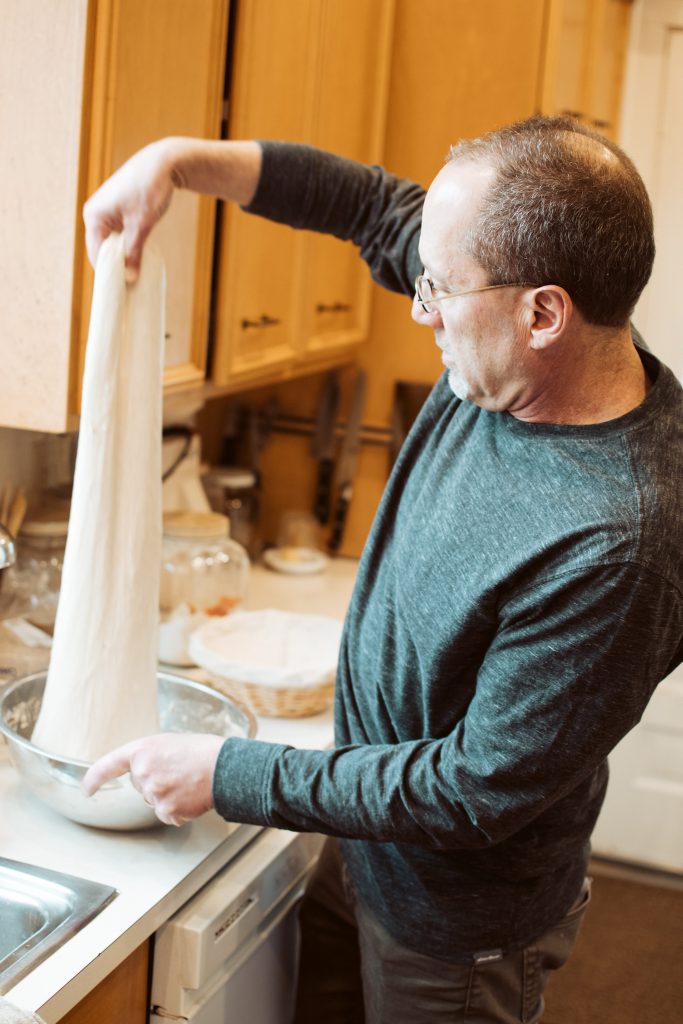
FK: In all of your travels for the book, do you have a favorite place or experiment from your research?
EP: I’ll just go with what comes to mind first: it has to be the Middle East, which is both where wheat was first domesticated and bread was first made some place in the fertile crescent. Exactly what day it happened on is not clear, but to this day, if you are hiking someplace in Israel or Jordan or Egypt, it is still common to start a little campfire and make pita just on the campfire. It’s just fundamentally human to be in these deserts where wheat was first grown and to be making bread that is right off of the fire with just flour and water and salt and some heat. What could be better than that?
FK: When you talk to people who are making sourdough at home in different parts of the country, what do you tell them about local flours?
EP: I have gotten good enough that I can make reasonably good diagnoses of epic fails from just a picture, and that’s because I have made all of those mistakes myself more than once. I think the book jacket calls me an “advanced amateur baker.” I did a presentation where I was showing a couple dozen people over Zoom how to start their own starters. It’s a really fun exercise. People who are accustomed to cooking from recipes, which is a cup and quarter of flour, it’s very standard. Well, this is much closer to watering your plants or feeding your cat. It is a zoo, a menagerie of multiple wild organisms, none of which you can see, none of which we know are actually there. We don’t know what species or what varieties, we just know in combination they will start to, if you care for them and feed them regularly and give them fresh water and raise them like you really care about them, they will in response sort of codevelop with you as a baker to make your dough rise and to provide flavor.
Some people get it and some people say, “If I add ¾ cup of water and wait 8 hours, what do I do next?” They can’t quite wrap their minds around the idea that they now have a pet that they’re going to have to care for and nurture. It’s not like most pets or children. It’s not a totally unvarying recipe.
If you’re going to be a master bread maker, you spend seven years just making thousands of loaves of bread until you speak dough. That’s a hard concept to teach. It’s hard to persuade people who want to get it right the first time. This is more like I just handed you a violin, and you can make some music here, but to be a good violinist it’s going to take some years of practice.
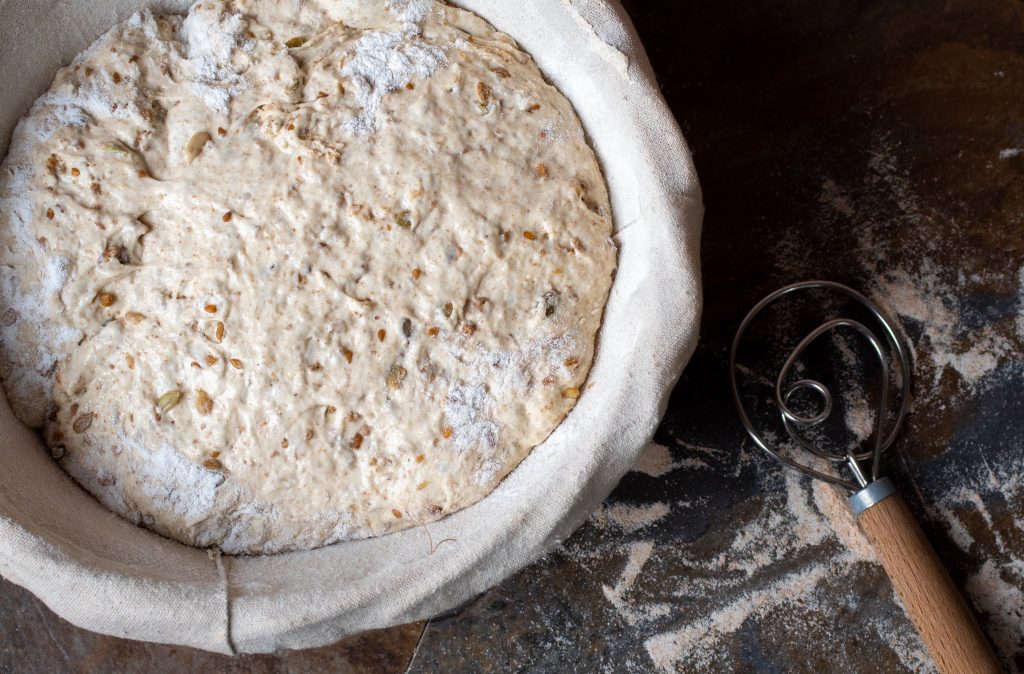
FK: Do you have a favorite recipe to make with sourdough?
EP: I’ve thought about this a lot. I finally concluded it’s whatever has just come out of the oven. If it’s fresh, I just love it. I think what I love about sourdough and the history of bread is that you start with these basic four ingredients: flour, water, a little bit of salt (you don’t have to have the salt, but it tastes terrible if it doesn’t) and a leavening agent. From that, you just let cultures do what they want. In every little village and valley in Iran there’s a different kind of bread with the same four ingredients. What we make in eastern Europe and what we make in Germany and what we make in Alabama, they’re all sort of the same and yet they’re expressions of particular culture and history and artistry. I love that variability.
FK: How do you balance making your own bread and trying all the amazing bakeries that are out there these days?
EP: The one advantage of living in Meadville, PA is there are no bakeries. It’s remote enough that the closest Starbucks is 40 miles away. It’s more than 100 miles to a Costco. That’s partly how I got started as a baker. I was not going to eat the garbage at the local grocery store if I could make it myself. I’m going to try the local bakery every place I go, but that’s only because I’m traveling.
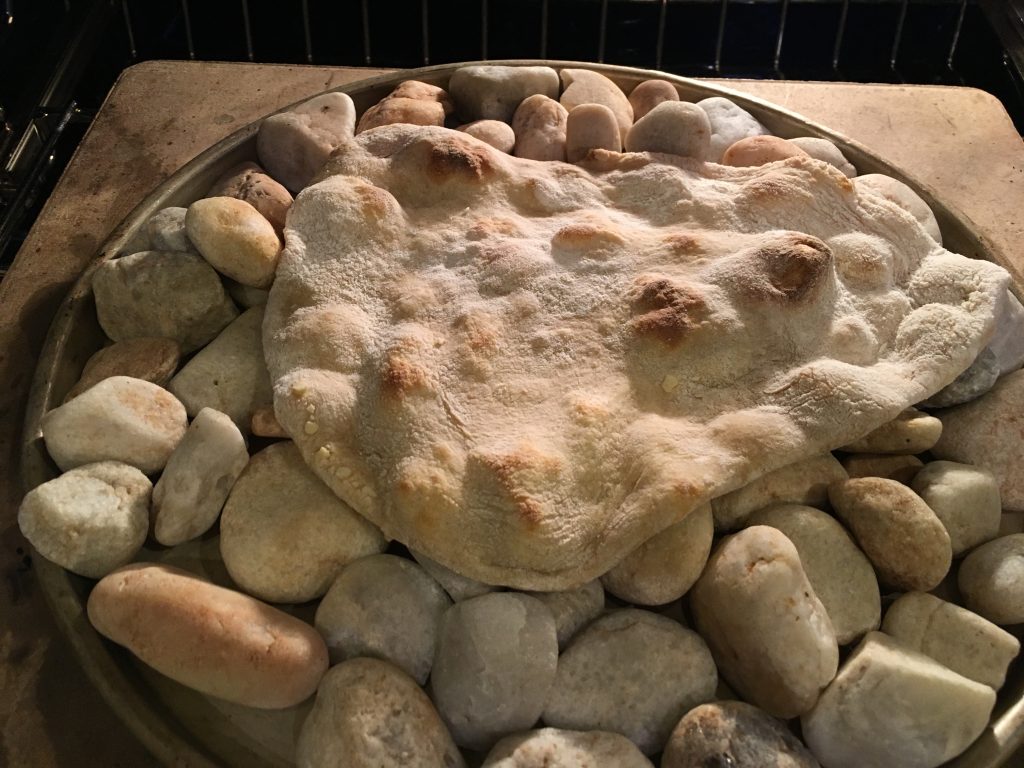
FK: Do you have a favorite sourdough cookbook?
EP: I have lots! Peter Reinhart is the go to. Far and away my favorite set of recipes always is Maurizio Leo at The Perfect Loaf, give him a big shout out. Then I’ve got The Rye Baker by Stanley Ginsberg just because rye bread is so tricky but so tasty because it’s got so much less gluten.
FK: Do you have a favorite flour or grain?
EP: I have my own mockmill. It does turn out that freshly milled flour really does taste a whole lot better than flour that’s been sitting in a bag on a shelf for who knows how long. I drive 40 miles to Erie, PA to a food co-op where I get whole grains of all varieties. I mill those myself. I also buy King Arthur Special Patent Flour, which only comes in 50 lb bags, as my white bread flour.
FK: How often are you making bread?
EP: That has changed since my kids graduated from high school and went off to college and stopped eating two or three loaves a week, but at least once a week. For me, that’s challenging because I have three different, very distinct starters, all of whom I have to keep happy and alive and well fed. I do worry that I’m going to be like those 90 year old ladies with tons of cats: somebody’s going to find me as an old man with just these oozing sourdough starters coming out the steps and under the doors.
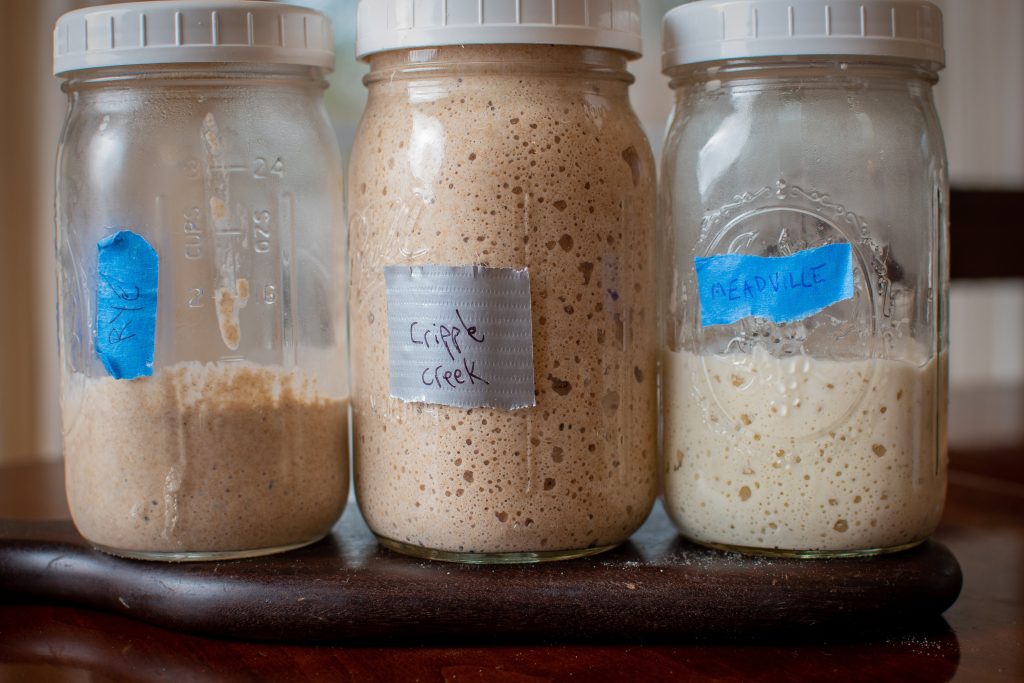
FK: Do you think you’re going to do more publishing work in this field or did you get the book in you out?
EP: What I’m working on now is a proposal for a book that’s tentatively called Loaf, again just about bread and how to make bread. It’s from cradle to grave. The book is going to open in Western Sahara, which is a country that is recognized by few people and not recognized by Morocco with whom it’s been at war for over 60 years. What’s worth fighting over there is the world’s largest phosphorus mine. Without phosphorus, plants don’t grow. It’s going to start with where phosphorus comes from and where potassium comes from. The story of nitrogen will blow your mind. I haven’t gotten to the point of asking why there are 35-40 ingredients in a loaf of bread you buy at the store, so that’s the next book.
FK: Were your students surprised by your book or did they know you were so into bread?
EP: Oh, they know, and now they really know. It’s this gateway drug. All I have to do is show up in any class, doesn’t matter what it’s about, with a loaf of fresh bread and cut it into slices and just say, “here, try some,” and they’re starting to ask the questions that as a professor I want them to ask. They ask about how to make it, and I show them and give them some starter and once they’ve done that they’re starting to make food from food. How many young people know how to cook? It’s not a skill that anybody knows how to do anymore. It comes back to what food does for community and how you can bring people together.
